What's New
Displaying results 3571 - 3580 of 4052
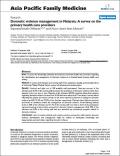
Resource | Fact Sheets,
The aim of this study was to assess the knowledge, attitudes and practices of primary health care providers regarding the identification and management of domestic violence in a hospital based primary health care setting. A survey was conducted of all clinicians and nursing staff of the outpatient, casualty and antenatal clinics in University Malaya Medical Centre using a self-administered questionnaire. Lack of positive attitude and positive practices among the staff towards domestic violence identification and management might be related to inadequate knowledge and inappropriate personal values regarding domestic violence.
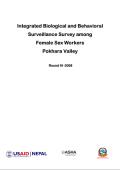
Resource | Publications,
This study is the third round of the IBBS and was conducted from June through to August 2008, among 200 female sex workers (FSWs) in Pokhara. The study was undertaken to measure the prevalence of HIV and syphilis, and associated risk behaviors, among FSWs. Demographic and sexual behavior data were collected through a structured questionnaire, while the prevalence of HIV and syphilis were selectively measured by blood samples.
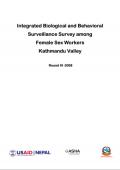
Resource | Publications,
This study is the third round of the Integrated Biological and Behavioral Surveys (IBBS) conducted from June through August 2008 among 500 Female Sex Workers (FSWs), both street (N=200) and establishment based (N=300) in the Kathmandu Valley (Kathmandu, Bhaktapur, and Lalitpur districts). The study was undertaken to measure the prevalence of HIV and syphilis, and associated risk and prevention behaviors among FSWs.

Resource | Publications,
The newly established Islamic Republic of Afghanistan faces many challenges: pockets of instability around the country, low literacy levels, high levels of opium production, and a lack of basic infrastructure. But what is known about the Acquired Immunodeficiency Syndrome (AIDS) in Afghanistan? Is Afghanistan at risk of a Human Immunodeficiency Virus (HIV) epidemic, and if so what can be done? The looming potential of an HIV epidemic in Afghanistan has motivated academics, donors, the Government of Afghanistan, and Non-Governmental Organizations (NGOs) to undertake research, create policies, and implement programs for the prevention of HIV spread in Afghanistan. Although HIV has been explored to varying degrees by several agencies, data on HIV in Afghanistan remains sparse and information sharing has been largely ad-hoc and uncoordinated.
This report aims to synthesize available information on the HIV epidemic in Afghanistan. The report explores regional HIV transmission patterns, the prevalence of risk factors for HIV in Afghanistan, and Afghanistan’s current programmatic and policy responses for HIV prevention.
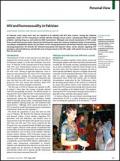
Resource | Publications,
In Pakistan, seven times more men are reported to be infected with HIV than women. Among the Pakistani population, modes of HIV transmission include infection through sexual contact, contaminated blood and blood products, injecting drug use, and mother-to-child transmission. Although most sexual transmission of HIV results from unsafe heterosexual contact, homosexual and bisexual contact also represent important modes of transmission. According to unpublished reports, the prevalence of HIV among homosexual and bisexual Pakistani men is reaching alarming proportions. We describe the Pakistani homosexual and bisexual culture, review statistics regarding HIV prevalence and risk behaviour, and identify areas of improvement in the HIV policy with specific focus on men who have sex with men.

Resource | Publications,
The main focus of the handbook is female prisoners1 and guidance on the components of a gender-sensitive approach to prison management, taking into account the typical background of female prisoners and their special needs as women in prison.

Resource | Fact Sheets,
Women in prison are vulnerable to gender-based sexual violence; they may engage in risky behaviours and practices such as unsafe tattooing, injecting drug use, and, are more susceptible to self-harm.
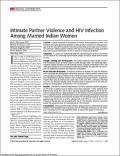
Resource | Publications,
Married Indian women who experience physical and sexual violence from husbands face a significantly increased risk of HIV infection as compared with women who are not thus abused, and this increased prevalence of infection is not affected by major risk behaviors within their control. Findings of the present study, based on both the large population-based sample and the use of standard diagnostic testing for HIV infection, should serve to confirm the nature of this relationship and move public health policy-makers and practitioners to increase recognition of IPV as a critically important target in the global fight against HIV/AIDS.

Resource | Presentations,
Leading the AIDS Response in Asia: Recommendations from the Commission on AIDS in Asia
XVII International AIDS Conference
August 5, 2008
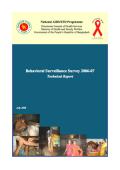
Resource | Publications,
For the Government of Bangladesh (GoB), the Behavioral Surveillance Survey (BSS) is a significant step in understanding and monitoring the levels of risk behavior associated with HIV infection within selected, most-at-risk populations (MARP) in the country. The current BSS, under the umbrella of an internationally recognized second-generation HIV surveillance system documents the risk behaviors of the selected MARP groups leading to vulnerability for HIV infection. It also focuses on the situation analysis of the MARP risk behaviors between behavioral surveillance rounds.





